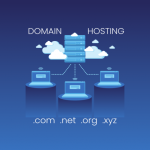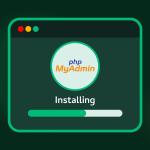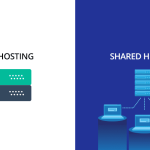In today’s digital landscape, server performance plays a critical role in ensuring that your applications and websites run smoothly, efficiently, and reliably. Whether you’re running a small business website, a large e-commerce platform, or a resource-intensive application, optimizing server performance is essential to meet user expectations and handle traffic spikes. In this guide, we'll explore key strategies to help you maximize your server performance.
1. Choose the Right Server Hardware
The foundation of server performance starts with choosing the right hardware. The specifications of your server directly influence its ability to handle workloads, process data, and serve content quickly. Here’s what to consider:
- CPU: The processor is the brain of your server. Choose a CPU with multiple cores and high clock speeds to efficiently handle concurrent tasks. For resource-intensive applications, consider using servers with high-performance CPUs like Intel Xeon or AMD EPYC.
- RAM: Sufficient memory is crucial for fast data processing and minimizing disk I/O operations. Ensure that your server has enough RAM to support your applications and anticipated traffic load. For database-heavy workloads, consider 32GB, 64GB, or even more, depending on your needs.
- Storage: Opt for SSDs (Solid-State Drives) instead of traditional HDDs (Hard Disk Drives). SSDs offer significantly faster read/write speeds, which can greatly reduce latency and improve overall server responsiveness. Additionally, consider RAID configurations for redundancy and enhanced performance.
- Network: A fast and reliable network connection is essential for high-performance servers. Ensure that your server’s network interface card (NIC) supports gigabit or higher speeds. For demanding applications, consider using load balancers and content delivery networks (CDNs) to distribute traffic efficiently.
2. Optimize Your Operating System
The operating system (OS) plays a pivotal role in server performance. Tweaking the OS settings can lead to significant improvements:
- Choose the Right OS: Select an OS that best suits your server's role. Linux distributions like Ubuntu Server, CentOS, or Debian are popular for web servers due to their stability and performance. Windows Server is a strong option for environments that rely on Microsoft technologies.
- Keep the OS Updated: Regularly update your OS to benefit from security patches, bug fixes, and performance improvements. An updated OS reduces vulnerabilities and ensures compatibility with the latest software.
- Disable Unnecessary Services: Disable or remove services and processes that are not essential to your server’s role. This reduces resource consumption and minimizes the attack surface.
- Optimize File System Performance: Choose a file system that aligns with your workload. For example, the XFS or ext4 file systems in Linux are known for their performance and stability. Regularly defragment the file system (if applicable) and monitor disk usage.
3. Enhance Application Performance
The performance of your server is heavily influenced by the efficiency of the applications running on it. Consider the following optimization strategies:
- Use Caching: Implement caching at various levels—application, database, and server-side. Tools like Memcached or Redis can store frequently accessed data in memory, significantly reducing database load and improving response times.
- Optimize Databases: Regularly optimize your databases by indexing key columns, using efficient queries, and maintaining proper normalization. Consider partitioning large tables and archiving old data to improve query performance.
- Use a Content Delivery Network (CDN): CDNs store copies of your website's static content (like images, CSS, and JavaScript files) on multiple servers worldwide. This reduces the load on your server and speeds up content delivery to users by serving data from a location closer to them.
- Load Balancing: Distribute incoming traffic across multiple servers using a load balancer. This prevents any single server from becoming overwhelmed and ensures that your application remains responsive even during high traffic periods.
4. Monitor and Manage Resource Usage
Proactive monitoring and management of server resources can help prevent performance bottlenecks:
- Use Monitoring Tools: Tools like Nagios, Zabbix, or Prometheus can help you monitor CPU usage, memory consumption, disk I/O, and network traffic in real-time. Set up alerts to notify you of potential issues before they impact performance.
- Manage Processes: Regularly review running processes and identify any that are consuming excessive resources. Kill or restart processes that are misbehaving or causing performance degradation.
- Optimize Disk I/O: Disk I/O can be a significant bottleneck, especially on high-traffic servers. Use tools like
iotop to monitor disk usage and identify processes that are heavy on disk I/O. Optimize your applications to minimize disk writes, and consider using RAM disks for temporary files. - Scale Horizontally: As your traffic grows, consider scaling your infrastructure horizontally by adding more servers. This spreads the load across multiple machines, reducing the strain on any single server.
5. Security and Stability Measures
Ensuring the security and stability of your server is crucial for maintaining performance over the long term:
- Implement Firewall and Security Measures: Use firewalls, intrusion detection systems (IDS), and other security measures to protect your server from malicious attacks. A compromised server can lead to performance issues or downtime.
- Regular Backups: Regularly back up your data to prevent data loss and minimize downtime in case of hardware failure or other issues. Store backups on a separate server or cloud storage service.
- Perform Routine Maintenance: Schedule regular maintenance tasks like software updates, log rotation, and system reboots. This helps keep your server running smoothly and reduces the likelihood of unexpected issues.
6. Optimize Web Server Configuration
If you're running a web server, optimizing its configuration can have a significant impact on performance:
- Choose the Right Web Server Software: Apache and Nginx are popular choices, each with its strengths. Nginx is known for its speed and low resource usage, making it a good choice for high-traffic sites. Apache is more feature-rich and flexible but can be more resource-intensive.
- Use Compression: Enable Gzip or Brotli compression on your web server to reduce the size of files sent to clients. This speeds up page load times and reduces bandwidth usage.
- Enable Keep-Alive: Keep-Alive allows multiple HTTP requests to be sent over a single connection, reducing the overhead of establishing new connections for each request. This can significantly improve the performance of your web server.
- Optimize SSL/TLS Settings: If your site uses SSL/TLS, ensure that your web server is configured to use the latest and most efficient protocols and ciphers. This enhances security and reduces the CPU load for encrypting and decrypting traffic.
Conclusion
Maximizing server performance involves a combination of selecting the right hardware, optimizing software configurations, and continuously monitoring and maintaining your server. By following these best practices, you can ensure that your server runs efficiently, handles traffic spikes with ease, and provides a fast, reliable experience for your users. Remember, server optimization is an ongoing process, so regularly review and adjust your settings to keep your server performing at its best.







